Ibaraki Nature Museum
A museum allowing visitors to experience electron microscopes, with smartphone-like operation
Ibaraki Nature Museum (Bando, Ibaraki prefecture) introduced a benchtop scanning electron microscope (SEM) which can be operated by visitors. All operations necessary for observations are performed through a touch panel. It will provide an appealing new exhibition that will make children "want to go there again".
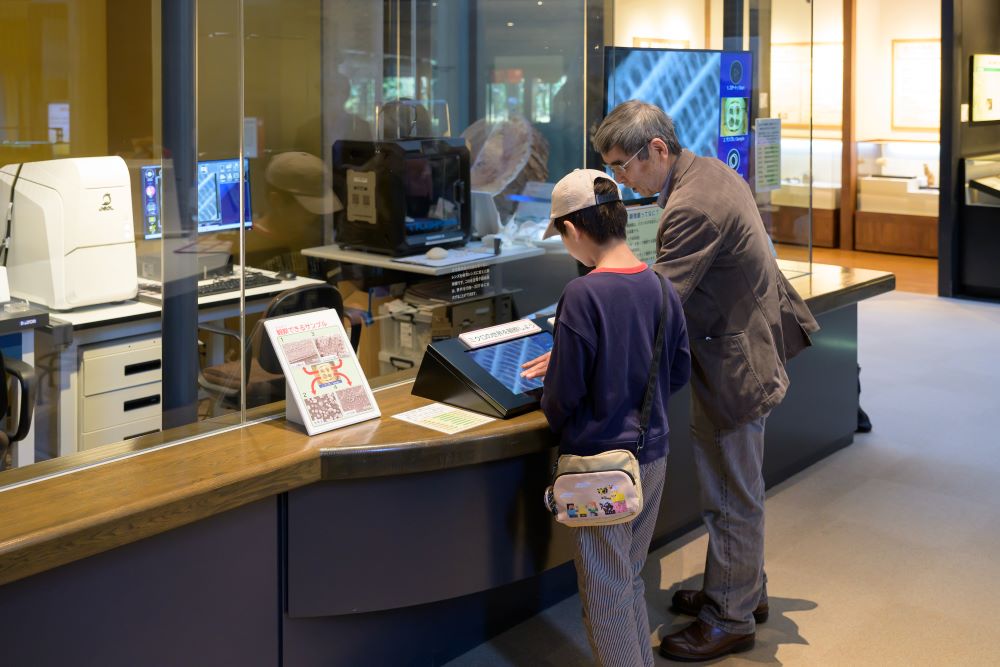
A visitor touching the SEM and Yokoyama Director telling the visitor how to operate it
A place where children beg "to go back"
Ibaraki Nature Museum is a very popular museum with over 400,000 visitors a year. Many of the nature museums in Japan have only about 100,000 visitors, and there are not many museums with a high number of visitors. The Ibaraki Nature Museum is one of the most visited nature-related museums in Japan.
On the other hand, it is not a museum with easy access, said Yokoyama, the
director.
Only 2 buses departing Moriya station on the Tsukuba Express, can reach the museum during operating hours.
In addition, it is about a 10 minute walk from the nearest bus stop.
For Saturdays, Sundays, and holidays, special buses run directly to the museum, but there are only 3 in a
day (*1).
Then, why does this museum have so many visitors?
There are about 70,000 visitors, mainly groups from kindergartens and elementary schools to the museum in a
year. And they come not only from Ibaraki Prefecture, but also from neighboring Chiba and Saitama
prefectures, as well as Tokyo. After returning home, many of the children beg their parents to go back to
the museum, and they then drive to the museum with their parents.
*1 Operation schedule as of April 2025. There is also a bus route from Atago station on the Tobu Noda line (Tobu Urban Park line), but it runs once in an hour and an additional 15 minute walk is needed from the nearest bus stop.
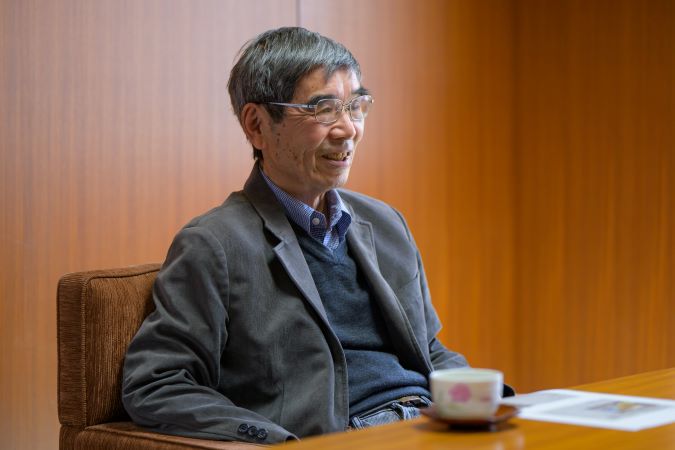
Yokoyama Director
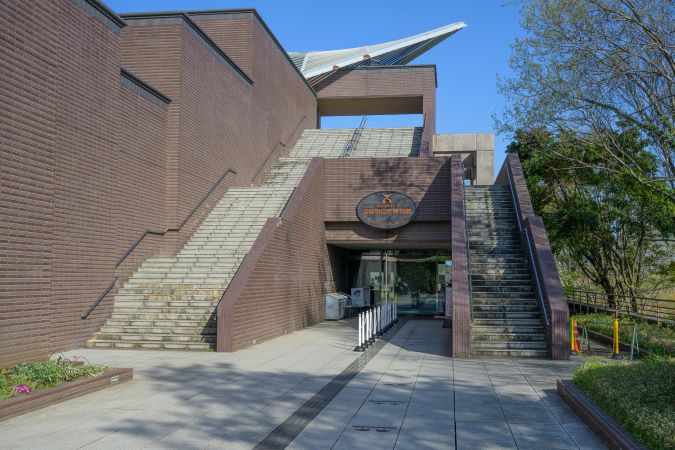
Entrance of Museum
Special exhibitions that attract people, three times a year
One of the characteristics of the Ibaraki Nature Museum is the large number of special exhibitions that it holds. The museum has held 91 special exhibitions over the past 30 years, roughly three times a year.
And the special exhibitions are said to have the reputation that "every exhibition is very interesting". For example, even minor themes such as deformable fungi and lichens have attracted more than 100,000 visitors. Staff members think about interesting contents that make children "want to go back".
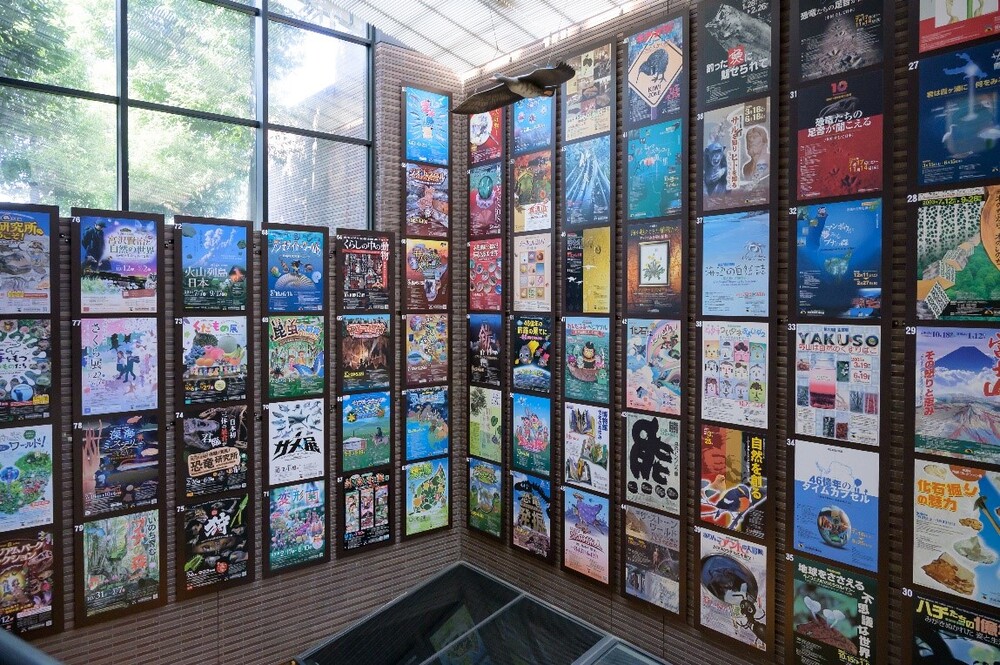
Posters of past special exhibitions are lined up in the museum
As one example, the theme of the 87th special exhibition was "No poops, No life!"".
(July 8 to September 18, 2023). In the exhibition, the role of different poops in nature was introduced
while a variety of poops' functions were the focus. The exhibition displayed actual freeze-dried poops of
elephants and giant pandas. The exhibition contents were so fulfilling that Yomiuri Shinbun and the Tokyo
Dome showed their interests in the content. They actually wished to "hold that kind of exhibition" and held
one by reconstructing the exhibition contents "Unchiten - No UNCHI, No LIFE-" at Gallery AaMo, Tokyo Dome
City, with cooperation with the museum (period: March 18 to May 18, 2025).
The idea of making children "want to go there again" does not stay with the plan exhibition. In February 2025, the museum introduced a benchtop scanning electron microscope (SEM) which allows a touch panel operation at the permanent exhibition section. Visitors can operate the microscope themselves and experience the microscopic world.
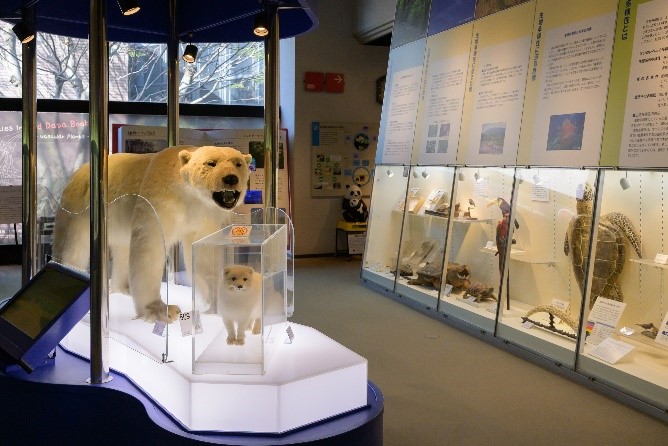
Various taxidermy and models are lined up in tight rows
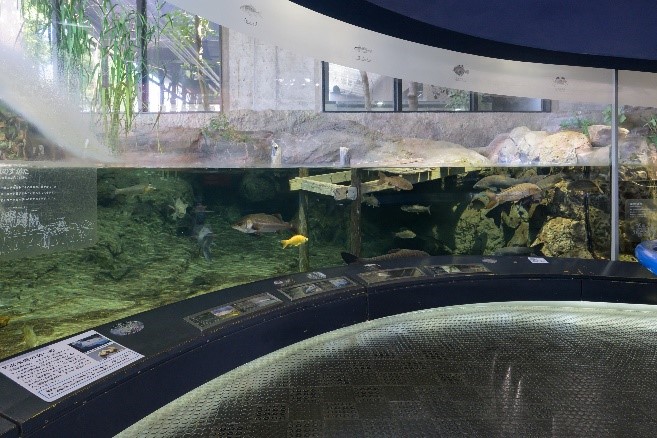
Unlike other museums, real living bodies are alive in the aquarium
The first SEM in a museum in Japan that can be operated by visitors - the director's long-held wish
It was the "JCM-7000 NeoScope™", a JEOL benchtop scanning electron microscope. They have chosen a JEOL product partly because of its functionality, such as the ability to use both the low and high vacuum modes. But the deciding factor was JEOL's flexibility in responding to their development requests for the user interface. All operations necessary for observation can be intuitively performed through a touch panel. Children accustomed to using smartphones will be able to operate the microscope without any particular difficulty. According to the museum, this kind of hands-on exhibit of electron microscopes is the first of its kind at a museum in Japan.
In the past, when Director Yokoyama worked for the National Museum of Nature and Science, he planned and implemented several projects to let visitors experience the microscopic world. He wanted them to experience the world which is not visible with an optical microscope by using an electron microscope. While the participants were delighted by this valuable experience, the support staff was left with a sense of regret. Since the operation of the electron microscopes could not be left to the participants, it was necessary for staff members to operate the microscopes at all times, which placed a heavy burden on them time-wise. This project was discontinued after about three years.
"Is there a way to make the visitors happy while reducing the burden on the
staff?"
The new electron microscope is also a solution to the long-held dream of the director.
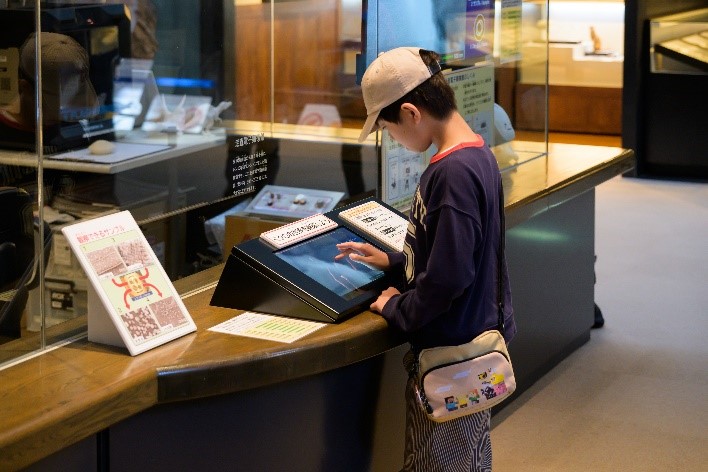
Intuitive operation by touch panel
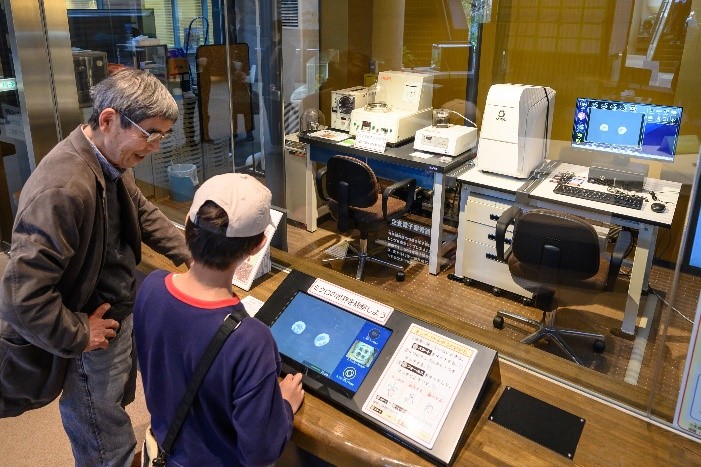
Anyone can operate the microscope by following a simple flow
So far, the samples that can be observed with the electron microscope are four types: 1 racoon hair, 2
radiolarian (marine plankton), 3 butterfly scales, 4 hydrangea pollen(as of June 27, 2025). Its
magnification is up to approximately 20,000 times.
Although it has only been a short time since the introduction of this exhibit, there were children who ran
straight to the SEM exhibit, saying, "Oh, there it is". It is already becoming known as one of the museum's
attractions that leads to an increase in repeated visitors.
Preparation of new samples is also in progress. The staff members are also discussing a number of other ideas for utilizing the SEM, such as "collaborating with schools," "using the SEM in events," and "inviting about 10 participants to bring their own samples to observe with the SEM and take the images home with them."
The SEM will be used to create a series of projects that will make people "want to visit the museum again". It will not be long before that day arrives.
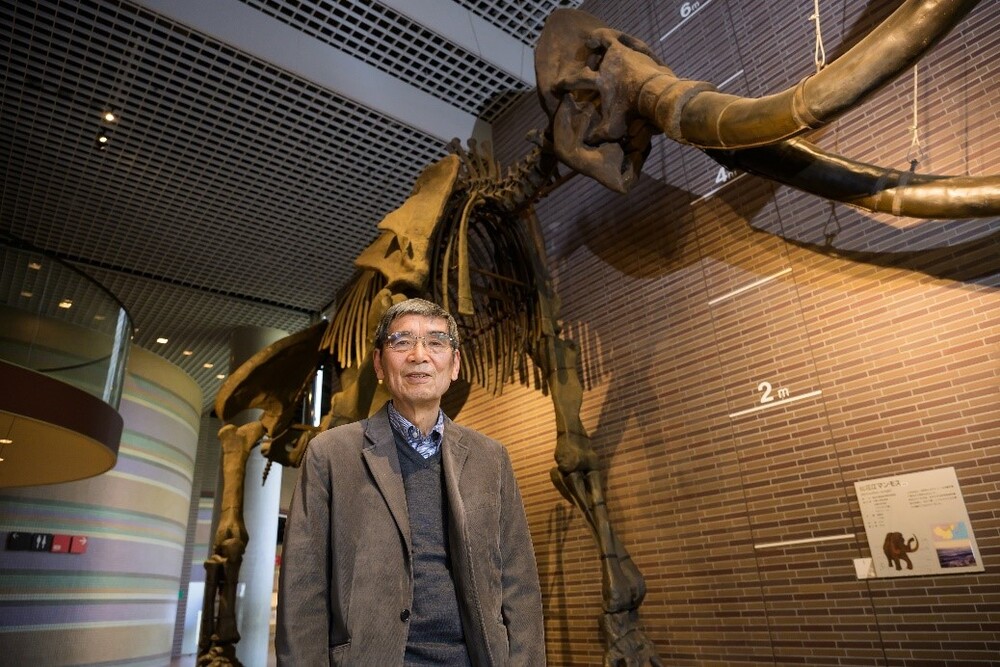
Profile
Dr. Kazumi Yokoyama
Director, Ibaraki Nature Museum
1972 Graduated Earth Science Department, Faculty of Science, Kanazawa University
1977 Completed doctoral program, School of Science, The University of Tokyo
After serving as researcher at the Geophysics Laboratory, University of Hawaii, assistant at Engineering
Department, Kanazawa University, and researcher at the University of Auckland, he came to work for the
National Museum of Nature and Science.
At the National Museum of Nature and Science, he served as researcher in earth science, chief research
officer, head of No.1 research laboratory, head of earth science department.
2016 Director, Ibaraki Nature Museum
